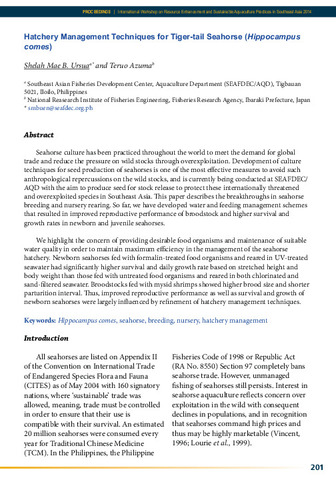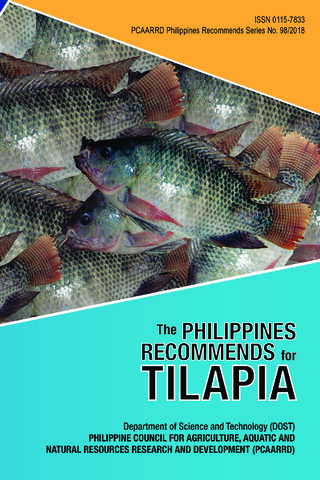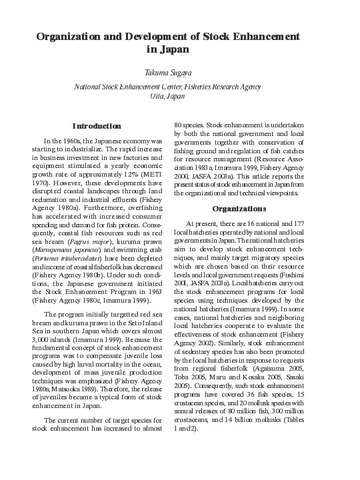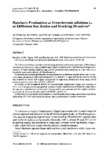Hatchery management techniques for tiger-tail seahorse (Hippocampus comes)
| dc.contributor.author | Ursua, Shelah Mae B. | |
| dc.contributor.author | Azuma, Teruo | |
| dc.contributor.editor | Romana-Eguia, Maria Rowena R. | |
| dc.contributor.editor | Parado-Estepa, Fe D. | |
| dc.contributor.editor | Salayo, Nerissa D. | |
| dc.contributor.editor | Lebata-Ramos, Ma. Junemie Hazel | |
| dc.date.accessioned | 2016-01-19T10:02:33Z | |
| dc.date.available | 2016-01-19T10:02:33Z | |
| dc.date.issued | 2015 | |
| dc.identifier.citation | Ursua, S. M. B., & Azuma, T. (2015). Hatchery management techniques for tiger-tail seahorse (Hippocampus comes). In M. R. R. Romana-Eguia, F. D. Parado-Estepa, N. D. Salayo, & M. J. H. Lebata-Ramos (Eds.), Resource Enhancement and Sustainable Aquaculture Practices in Southeast Asia: Challenges in Responsible Production of Aquatic Species: Proceedings of the International Workshop on Resource Enhancement and Sustainable Aquaculture Practices in Southeast Asia 2014 (RESA) (pp. 201-206). Tigbauan, Iloilo, Philippines: Aquaculture Dept., Southeast Asian Fisheries Development Center. | en |
| dc.identifier.isbn | 9789719931041 | |
| dc.identifier.uri | http://hdl.handle.net/10862/2774 | |
| dc.description.abstract | Seahorse culture has been practiced throughout the world to meet the demand for global trade and reduce the pressure on wild stocks through overexploitation. Development of culture techniques for seed production of seahorses is one of the most effective measures to avoid such anthropological repercussions on the wild stocks, and is currently being conducted at SEAFDEC/ AQD with the aim to produce seed for stock release to protect these internationally threatened and overexploited species in Southeast Asia. This paper describes the breakthroughs in seahorse breeding and nursery rearing. So far, we have developed water and feeding management schemes that resulted in improved reproductive performance of broodstock and higher survival and growth rates in newborn and juvenile seahorses. We highlight the concern of providing desirable food organisms and maintenance of suitable water quality in order to maintain maximum efficiency in the management of the seahorse hatchery. Newborn seahorses fed with formalin-treated food organisms and reared in UV-treated seawater had significantly higher survival and daily growth rate based on stretched height and body weight than those fed with untreated food organisms and reared in both chlorinated and sand-filtered seawater. Broodstocks fed with mysid shrimps showed higher brood size and shorter parturition interval. Thus, improved reproductive performance as well as survival and growth of newborn seahorses were largely influenced by refinement of hatchery management techniques. | en |
| dc.language.iso | en | en |
| dc.publisher | Aquaculture Department, Southeast Asian Fisheries Development Center | en |
| dc.subject | Philippines | en |
| dc.subject | Seahorse | en |
| dc.subject | Hatchery management | en |
| dc.title | Hatchery management techniques for tiger-tail seahorse (Hippocampus comes) | en |
| dc.type | Conference paper | en |
| dc.citation.spage | 201 | |
| dc.citation.epage | 206 | |
| dc.citation.conferenceTitle | Resource Enhancement and Sustainable Aquaculture Practices in Southeast Asia: Challenges in Responsible Production of Aquatic Species: Proceedings of the International Workshop on Resource Enhancement and Sustainable Aquaculture Practices in Southeast Asia 2014 (RESA) | en |
| dc.subject.asfa | seed (aquaculture) | en |
| dc.subject.asfa | growth rate | en |
| dc.subject.asfa | feeding | en |
| dc.subject.asfa | cultured organisms | en |
| dc.subject.asfa | nursery ponds | en |
| dc.subject.asfa | stocking (organisms) | en |
| dc.subject.asfa | trade | en |
| dc.subject.asfa | feeds | en |
| dc.subject.asfa | tropical fishes | en |
| dc.subject.asfa | survival | en |
| dc.subject.asfa | seed production | en |
| dc.subject.asfa | rare species | en |
| dc.subject.asfa | hatcheries | en |
| dc.subject.asfa | breeding | en |
| dc.subject.asfa | overexploitation | en |
| dc.subject.asfa | stocks | en |
| dc.subject.asfa | ornamental fishes | en |
| dc.subject.asfa | reproduction | en |
| dc.subject.asfa | breeding stock | en |
| dc.subject.asfa | species extinction | en |
| dc.subject.asfa | aquaculture techniques | en |
| dc.subject.asfa | fish culture | en |
| dc.subject.scientificName | Hippocampus comes | en |





